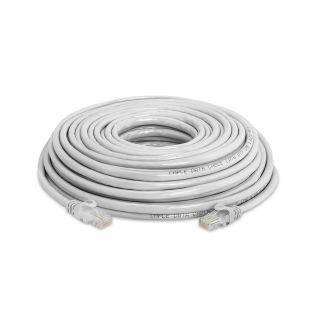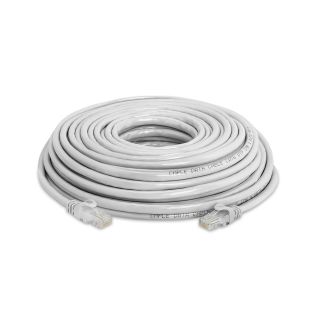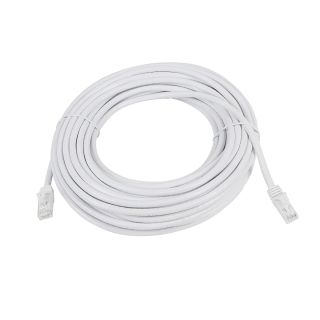The History of CCTV
What is CCTV?
CCTV stands for "Closed Circuit TV" and is mainly used for security and surveillance applications. All security cameras are considered CCTV cameras, even PoE, coax and wireless cameras are consider CCTV cameras. This is because they do not broadcast their video feed to the general public. In other words their video feed is "closed circuit".
CCTV cameras and systems are used in residential and business environments. They are a cost effective way to deter crime, protect homes, provide family safety, protect assets, manage employees and monitor critical processes. Police and law enforcement rely on them heavily to solve crime and identify suspects. In fact they are so effective many cities now require a CCTV system to be installed in businesses before they will grant a business license, they are that effective!
The origins and evolution of the CCTV industry is surprising and interesting. The technology has evolved dramatically over its century of existence and has become a mainstream technology used in our daily lives.
The History of CCTV
The first documented use of surveillance cameras was in Soviet Russia during the Stalin era. In 1927, wireless video technology was used to monitor visitors to the Kremlin. In 1942, Closed Circuit Television (CCTV) was first used in Germany. In 1949, the first commercially available CCTV systems were manufactured by an American company called Vericon.

The first CCTV cameras to be widely viewed by the public were used on the Apollo trips to the moon starting in 1969. The video signals from the space crafts were generated as a CCTV signal (Closed Circuit TV) then transmitted to Earth, which was then broadcast (Open Circuit) worldwide through commercial TV broadcasts.

CCTV technology then developed a commercial market in the 1970’s. The first commercially available cameras were extremely expensive and very large compared to today’s technology. They were powered via 110v AC power and most cameras had a six-foot cord with the 110v AC plug requiring the camera to be located within 6 feet of a power outlet. The technology was analog, producing 240 TV lines of black and white video. The first systems did not offer any ability to record, simply because no affordable technology had been invented that was commercially viable.

In 1977, VHS tapes were invented and by the mid 1980’s the first commercially available time-lapse recorders were developed. The technology required a new VHS tape to be manually placed into the recorder every 12 or 24 hours, depending on the recording schedule. One time-lapse recorder for each camera was required because the technology needed to multiplex multiple video feeds on one screen had not been invented. The systems were extremely expensive, costing as much as $12,000-15,000 for a four camera system and seldom met customer expectations. At current inflation rates, that would be approximately $43,200-54,000 today.

Analog CCTV systems became more popular in the early 1990’s as costs were dropping and the technology was improving. However, the systems were still limited by resolution, offering maximum resolutions of 480 TV lines of analog video.
As computer technology developed in the mid 1990’s, digital video recorders (DVRs) emerged, which recorded the cameras analog video directly to hard drives. This was the first time CCTV systems had the ability to record for long periods of time without manual daily maintenance.

Camera technology continued to develop during the 1990’s and 2000’s and the analog technology finally reached its peak, offering 700 TV lines of clarity. At the same time, a new form of technology called digital IP (internet protocol) was emerging on the market.
The first IP cameras offered 720P resolution. Because the analog and digital IP are very different technologies, their clarity is gauged differently and, by comparison, the 720p cameras offered twice the clarity of analog. A 720p camera offers .8 megapixels of clarity. In comparison, a current 4K IP camera offers 8 megapixels of clarity - a 10x increase in overall quality. In the mid 2000’s, IP started to transform the video surveillance markets. The resolutions then jumped to 1080p- 2 megapixels of clarity. This was the dawn of HD video.

Prior to the IP technology, the analog video signal was transmitted on RG59 or RG6 coax cable using BNC (Bayonet Neil-Concelman or British Naval Connector) fittings. All IP cameras since their inception use either network cable or WiFi technology for video transmission.

Due to the clarity advantages of IP cameras, many businesses transferred their security budgets to their IT departments and IT managers. This accelerated the migration to IP based systems.
Starting in 2015, new coax technologies began to emerge that allowed HD video to be transmitted over coax. This was inevitable due the millions of aging coax based systems worldwide. The cost to rewire these old systems were considerable and many manufacturers targeted these systems with new digital technologies such as SDI (Serial Data Interface), CVI (Composite Video Interface), TVI (Transport Video Interface), and AHD (Analog High Definition). All of these digital technologies were designed to retrofit existing coax cable systems. The main benefit of these technologies was the ability to transmit a digital video signal over coax.
Technology | Time Period | Transmission | Resolution | Megapixel |
Analog | 1927-2014 | Coax | 600TV Lines | - |
HD IP | 2002-Present | Cat5 Network | 720p | .8 |
Ultra HD IP | 2005-Present | Cat5 or 6 Network | 1080p-3K | 2 - 5.5 |
4K | 2018-Present | Cat6 Network | 4K | 8 |
Backstreet is always offering the leading-edge technologies. We offer both IP and coax based solutions, 3K and 4K cameras, recorders capable of recording all channels in 4K, and live 30fps (frames per second) video. We pride ourselves in the ability to migrate to the latest tech while assuring all existing systems are backwards compatible. The video below is a good example of the clarity 4K cameras can provide. Keep in mind as you view the video you are only viewing it in 1080p (for streaming purposes), 4K video provides 4 times the clarity of 1080p.
4K Security Camera Video Sample
- (Pro90D-4K) 4K Turret Vandal Dome, Consumers #1 Choice
- - Indoor/Outdoor Wall or Ceiling
- - Audio - Built-in Microphone
- - License Plate ID & Capture
- - 90ft COLOR Night Vision
Special Price $212.00 Regular Price $299.00 - (Pro120SL) 3K Outdoor Long Range, Motorized Zoom Lens
- - Outdoor Metal Housing
- - Motorized Zoom Lens 110°- 22°
- - Wall & Ceiling Mount
- - 120ft COLOR Night Vision
Special Price $229.00 Regular Price $329.00 - (Pro90D-4KG) Black 4K Vandal Dome, Consumers #1 Choice
- - Indoor/Outdoor Wall or Ceiling
- - Audio - Built-in Microphone
- - License Plate ID & Capture
- - 90ft COLOR Night Vision
Special Price $212.00 Regular Price $299.00 - (Dual-Cable-500) 500ft Siamese Video Coax & 18/2 Power Cable
- Dual Video & Power Cable. Only one cable for each camera needed. Rg59 Coax + 18/2 Power.
Special Price $149.00 Regular Price $192.00 - (Cable-100) 100' Siamese Video Coax & 18/2 Power, BNC Fittings
- 100' Video & Power cable with plug and play fittings. Great for quick installation.
Special Price $42.00 Regular Price $74.00 - (Cable-25) 25' Siamese Video Coax & 18/2 Power Cable, BNC Fittings
- Pre-made Video & Power cable with quick connect fittings. For quick plug & play installs.
Special Price $23.00 Regular Price $35.65 - (Cable-60) 60' Siamese Video Coax & 18/2 Power Cable, BNC Fittings
- Pre-made Video & Power cable with quick connect fittings. For quick plug & play installs.
Special Price $37.50 Regular Price $51.00 - (CAT6-500) 500' Easy Spool Box of Cat6e, Indoor Use
- 500ft Box of easy spool network data cable. Great for 3K & 4K network IP cameras. For use with RJ45 Connectors.
Special Price $249.00 Regular Price $299.00 - (CAT6-100) 100' Network Patch Cable, Cat6 Indoor Cable
- White Network Cable with RJ45 Fittings. For use with our HD cameras. Provides video and power transmission.
Special Price $54.00 Regular Price $86.00 - (CAT6-75) 75' Network Patch Cable, Cat6 Indoor Cable
- White Network Cable with RJ45 Fittings. For use with our HD cameras. Provides video and power transmission.
Special Price $42.00 Regular Price $51.00 - (CAT6-50) 50' Network Patch Cable, Cat6 Indoor Cable
- White Network Cable with RJ45 Fittings. For use with our HD cameras. Provides video and power transmission.
Special Price $24.00 Regular Price $31.00












